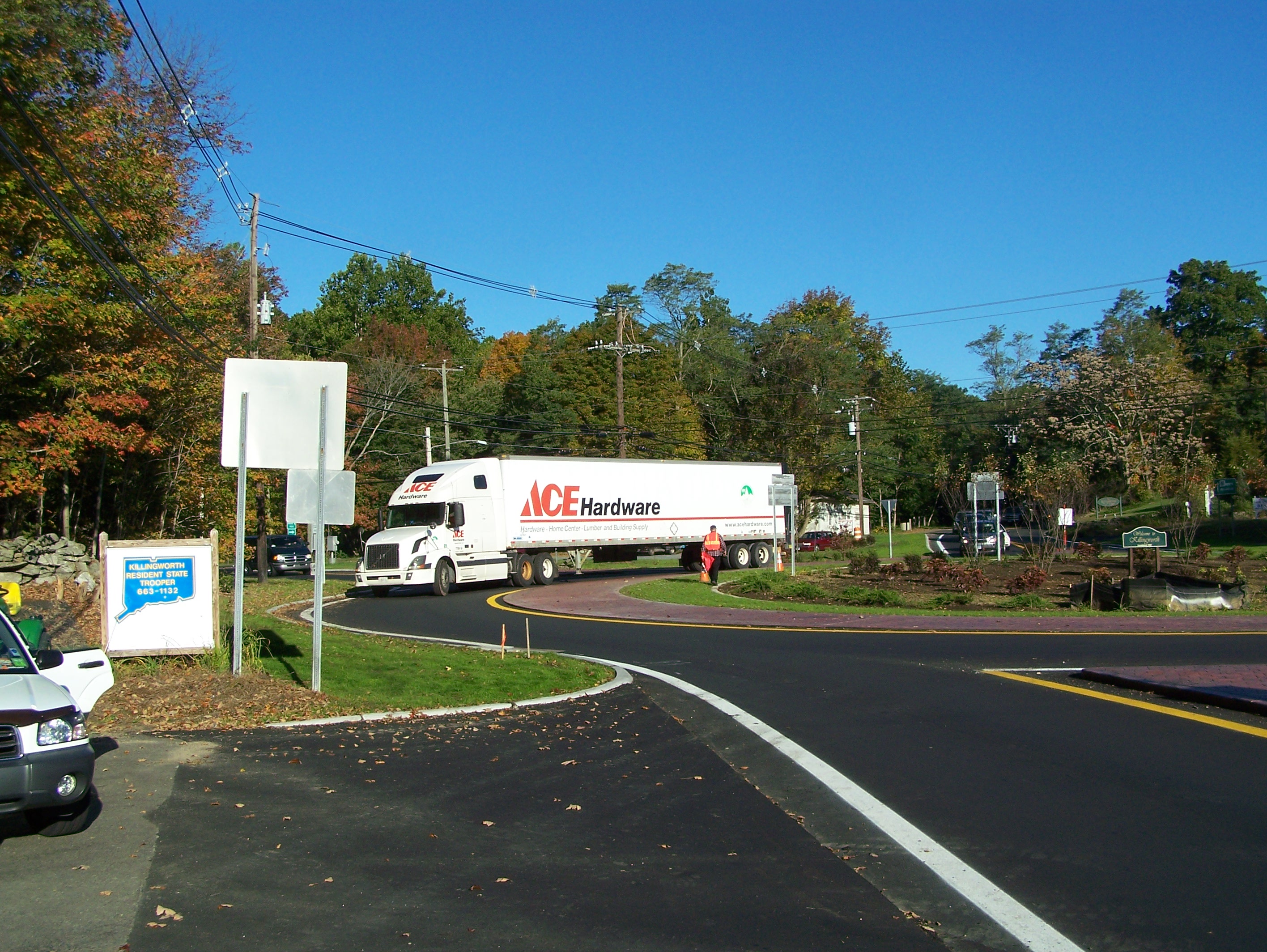What is a Roundabout?

Background:
The modern roundabout is a circular intersection that has been successfully implemented in Europe and Australia over the past few decades. In addition to the tens of thousands of roundabouts in operation around the world, there are approximately 1100 in the United States. Until recently, roundabouts have been slow to gain support in this country. The lack of acceptance can generally be attributed to the negative experience with traffic circles or rotaries built in the earlier half of the twentieth century (i.e., Cape Cod Rotaries). Safety and operational problems caused these traffic circles to fall out of favor by the 1950's. However, substantial progress has been achieved in the subsequent design of circular intersections, and a modern roundabout should not be confused with the traffic circles of the past.
Roundabouts vs. Traffic Circle:
Three basic principles distinguish the modern roundabout from a traffic circle.
1. Modern roundabouts follow the "yield-at-entry" rule in which approaching vehicles must wait for a gap in the circulating flow before entering the circle. Many of the old traffic circles in the United States required circulating vehicles to grant the right of way to entering vehicles though few, if any, of these type circles exist in Connecticut. Some traffic circles may also use stop signs or signals to control vehicle entry.
2. Modern roundabouts involve low speeds for entering and circulating traffic, as governed by small diameters and deflected (curved) entrances. In contrast, traffic circles emphasized high-speed merging and weaving, made possible by larger diameters and tangential (straight) entrances.
3. Modern roundabouts are substantially smaller than a typical traffic circle. The diameter of a typical roundabout can be 3 to 5 times smaller than the diameter of a traffic circle, thereby using an area 9 to 25 times smaller than a traffic circle. The larger size of the circle was required due to the "yield within the ciricle" operation and because they were designed to accomodate higher speeds of both entering and circulating traffic.
4. Adequate deflection of the vehicle entering a roundabout is the most important factor influencing their safe operation. This is done by adjusting the geometry of the entrance alignment, splitter island, center island, and exit alignment to ensure that "through" vehicle paths are significantly deflected. Roundabouts typically limit the speed of vehicles to 20 mph or less.
Safety:
Several features of roundabouts promote safety. At traditional intersections with stop signs or traffic signals, some of the most common types of crashes are right-angle, left-turn, and head-on collisions. These types of collisions can be severe because vehicles may be traveling through the intersection at high speeds. With roundabouts, these types of potentially serious crashes essentially are eliminated because vehicles travel in the same direction. Installing roundabouts in place of traffic signals can also reduce the likelihood of rear-end crashes and their severity by removing the incentive for drivers to speed up as they approach green lights and by reducing abrupt stops at red lights. The vehicle-to-vehicle conflicts that occur at roundabouts generally involve a vehicle merging into the circular roadway, with both vehicles traveling at low speeds — generally less than 20 mph.
A 2001 Insurance Institute for Highway Safety study of 23 intersections in the United States reported that converting intersections from traffic signals or stop signs to roundabouts reduced injury crashes by 80 percent and all crashes by 40 percent. A study of 17 higher speed rural intersections (40 mph and higher speed limits) found that the average injury crash rate per million entering vehicles was reduced by 84 percent and fatal crashes were eliminated when the intersections were converted to roundabouts.
See Insurance Institue for Highway Safety's study on roundabouts and other useful roundabout information:
IIHS.org (roundabout informational page)
Summary:
The number of roundabouts constructed in the U.S. is relatively small. Those that are currently in operation have been reported to be performing favorably, when compared with conventional controlled intersections (i.e., stop signs or signals), in terms of improved safety, shorter delays, increased capacity, and improved aesthetics. Generally roundabouts have resulted in an overall reduction in the number and severity of accidents, despite the initial concern that lack of familiarity with this type of intersection would lead to driver confusion.

